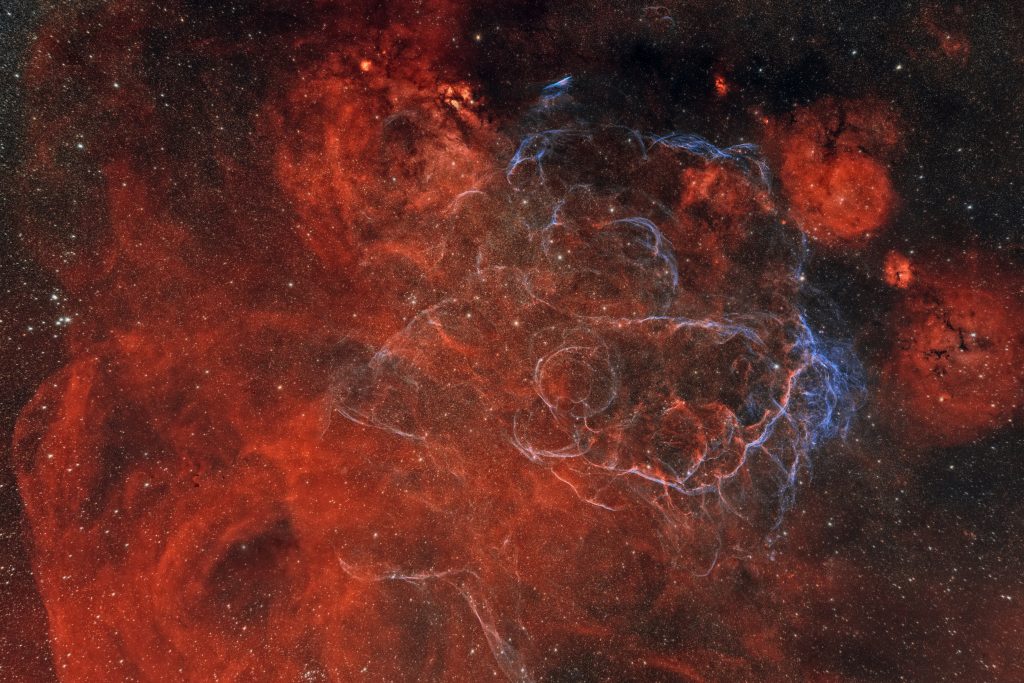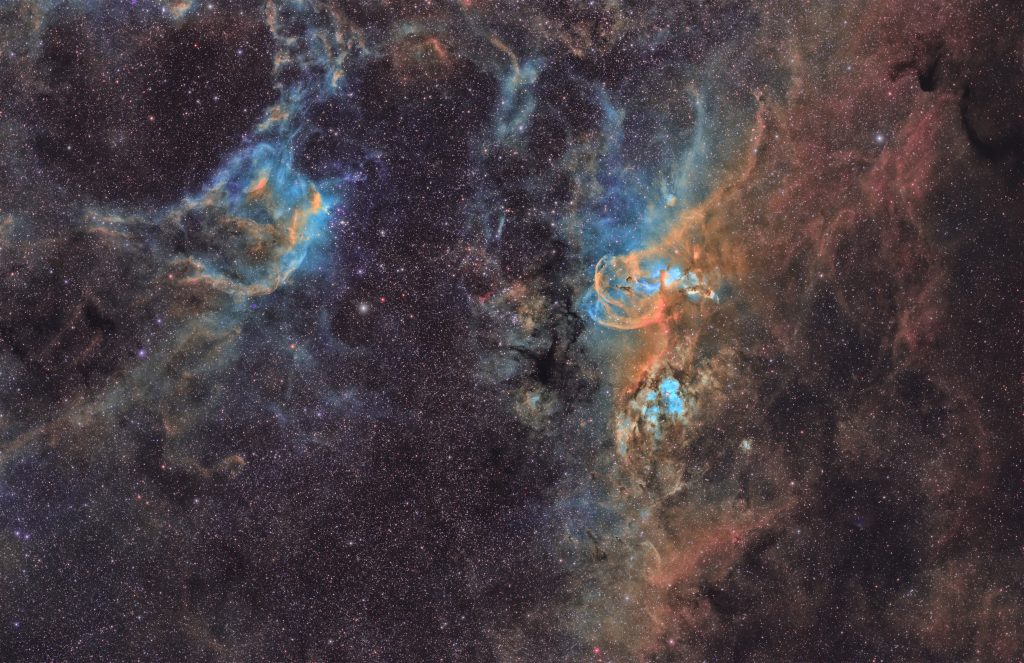As I promised last year, we had to return to Namibia, because I have some unsettled business with the Dolphin Nebula. This year was already a post-pandemic year, so there were many guests at Kiripotib astro farm. The program of the day was the same as last time – processing the pictures during the day and photographing during the night. We managed to see the giraffes again just by e-biking a few km from the farm:
As I already mentioned, my primary target was the Dolphin Nebula, but I prepared a detailed plan of what to photograph. Unfortunately, the plan was ruined by the weather. The first 3 days it was cloudy and even stormy.
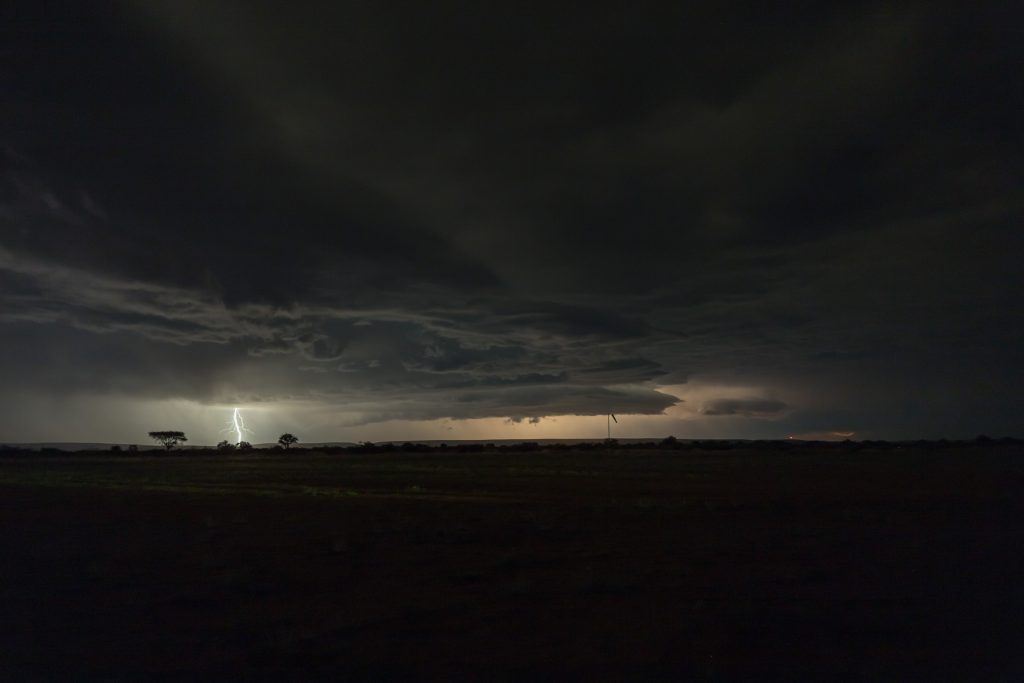
This was such a surprise because last time we had only clear skies. I rented a Newtonian telescope for 3 nights and two nights were cloudy, so I had to concentrate on high-priority deep space objects. I tried to recapture the Galaxy Centaurus A, but the mount ALT 6 ADN didn’t work well. 50% of the frames were having oblong stars in the RA direction.
So, I had to concentrate on the short focal lengths. Same as last year, I took SharpStar 94 EPDH and for the second rig carried by the iOptron SkyGuider, I chose Samyang 135 mm slowed down to f2.4. In the end, I managed to capture the Vela supernova remnant, the Statue of Liberty Nebula, and many more.
Here is the farm from a distance with Milky Way in the background:
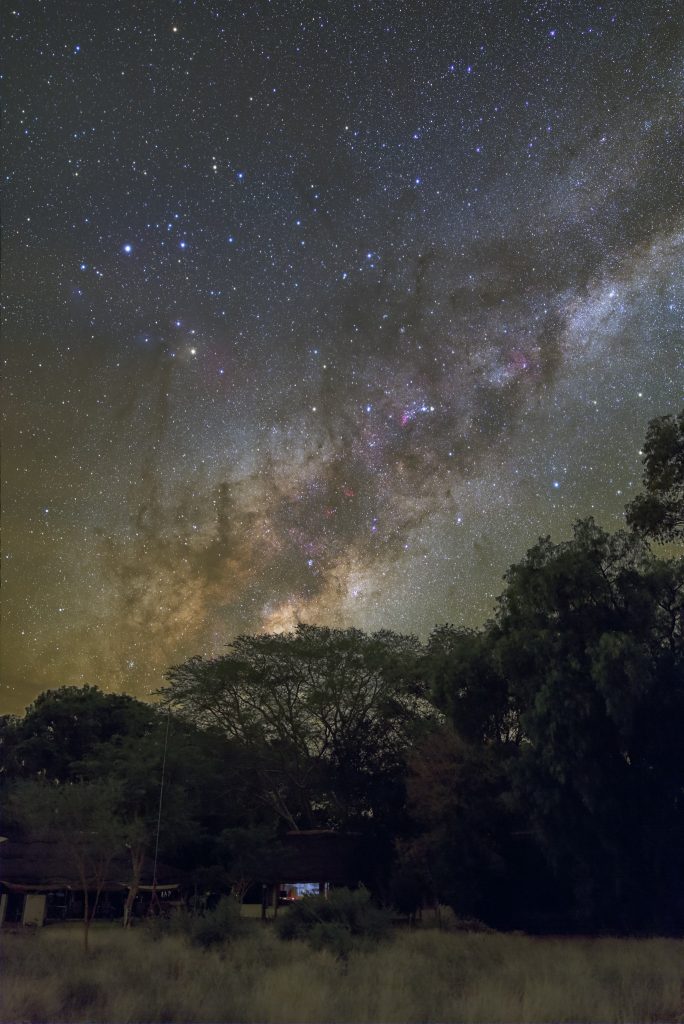
Star trails roughly 3 hours, Canon 6D, iso 400, 87 exposures, each 2 minutes long, Sigma 28 Art f1.4
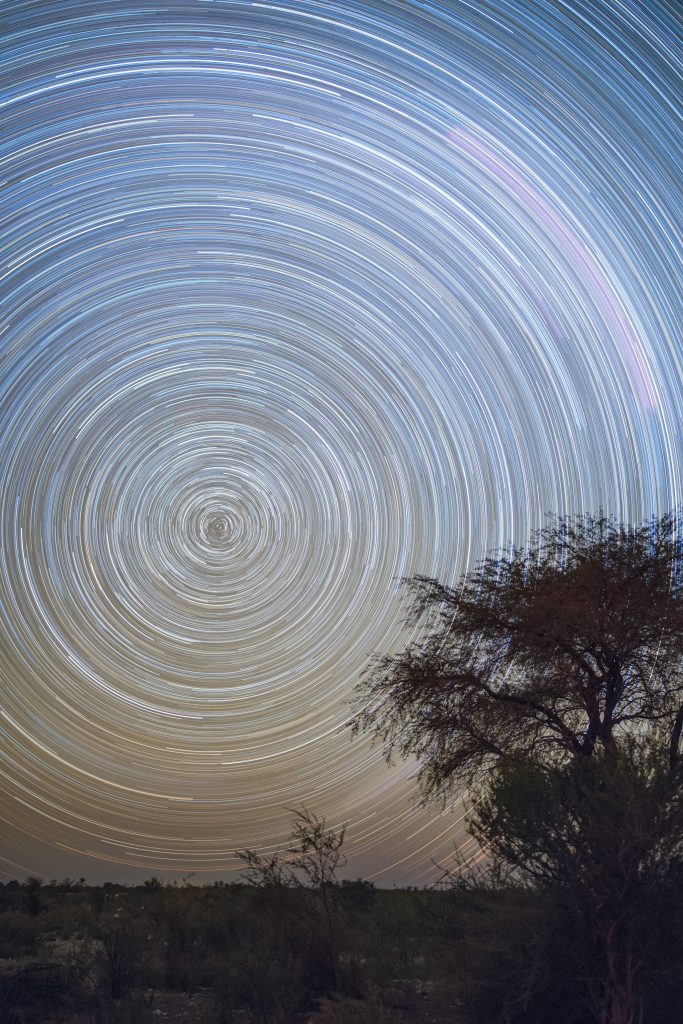
The chalet, which we rented last time was already booked, so we stayed in a room called “Hangar”, which is a little bit less photogenic compared to a chalet. Canon 6D, iso 1600, 12x15s, Sigma 28 Art f1.4:
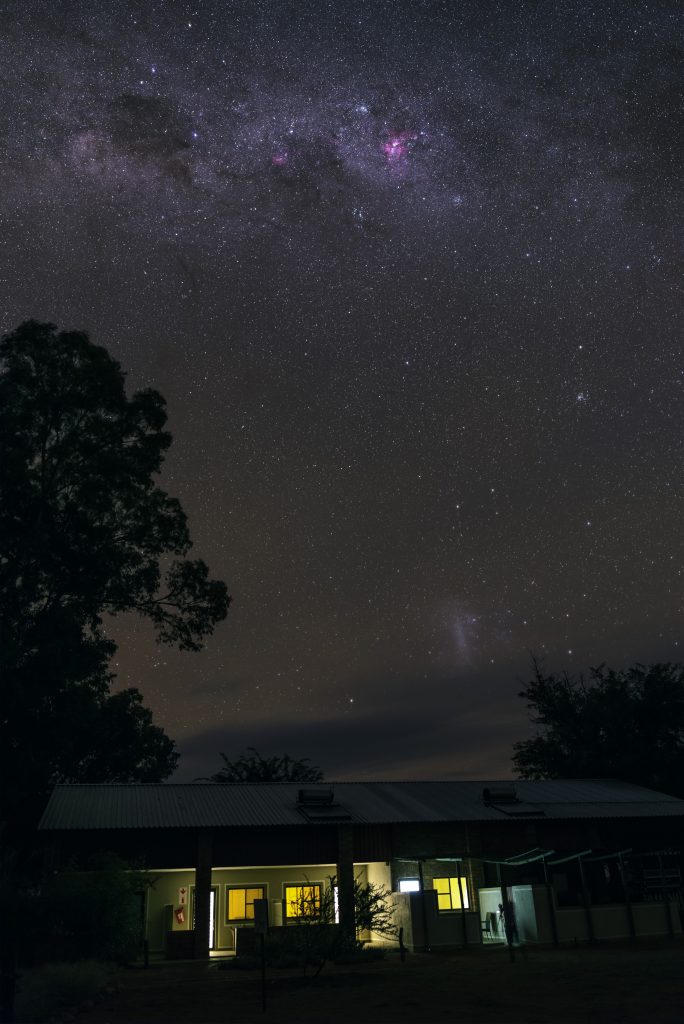
Panorama of the Milky Way, Canon 6D, iso 1600, 6 frames, each 8x15s, Sigma 28 Art f1.4:
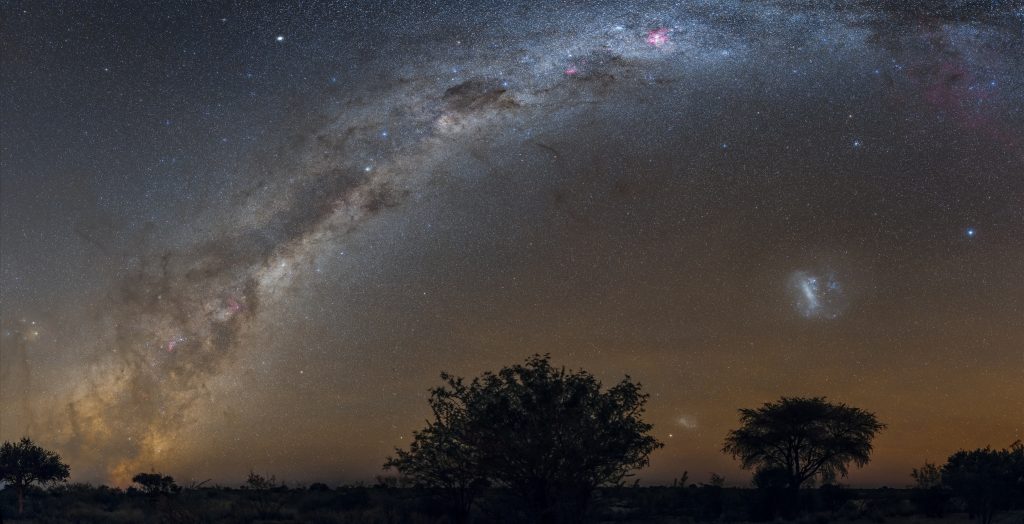
I even tried astrophotography with GoPro, but it seems this camera needs some light pollution:
After one week at Kiripotib, we rented a car and headed north to Etosha National Park, but before that, we stopped at the Hoba meteorite site, where the largest single-piece meteorite is resting. We were surprised that its 60 tons of weight didn’t cause a gigantic crater. It is assumed that this impact occurred 80,000 years ago, and most probably there was an ocean, so the meteorite just bounced a couple of times, till the kinetic energy was completely dissipated.
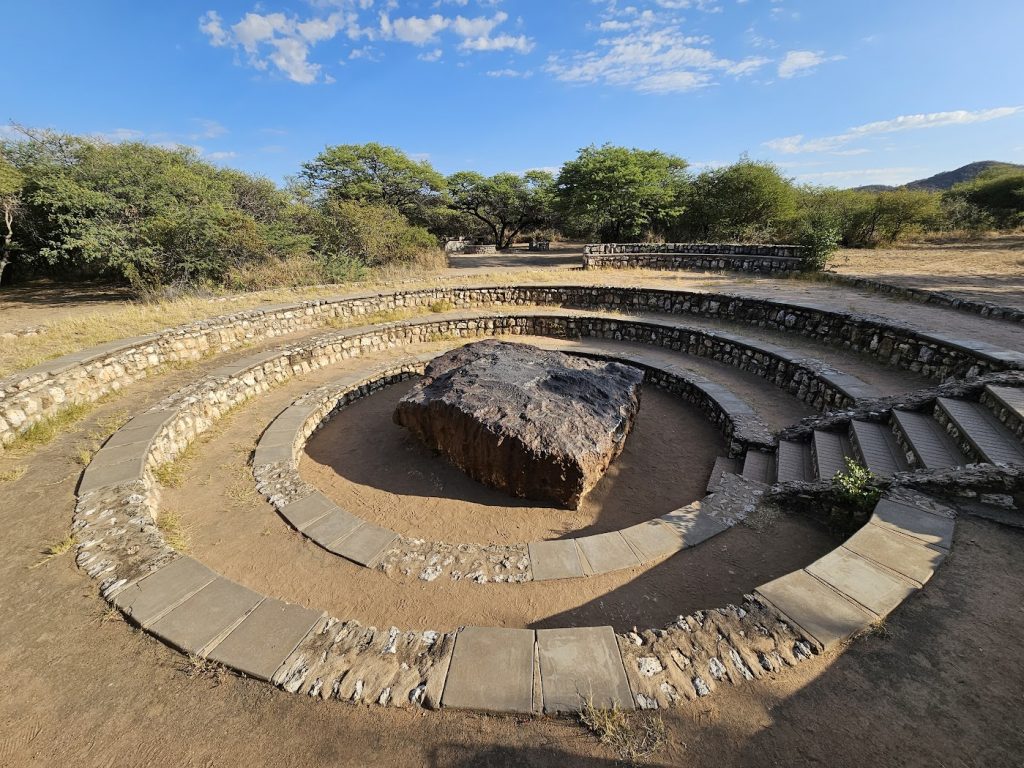
We slept one night at a nearby camp and the next day continued to Etosha National Park. Etosha opens the gates early with the sunrise and closes with the sunset. We decided to stay directly inside, so we don’t have to drive every day in and out. There are many camps inside Etosha, Okaukeojo, Namutoni, Halali, and Dolomite. We picked the first one, due to its central location. This allowed us to wake up really early and with the sunrise start to explore nearby water holes, where many animals can be seen.
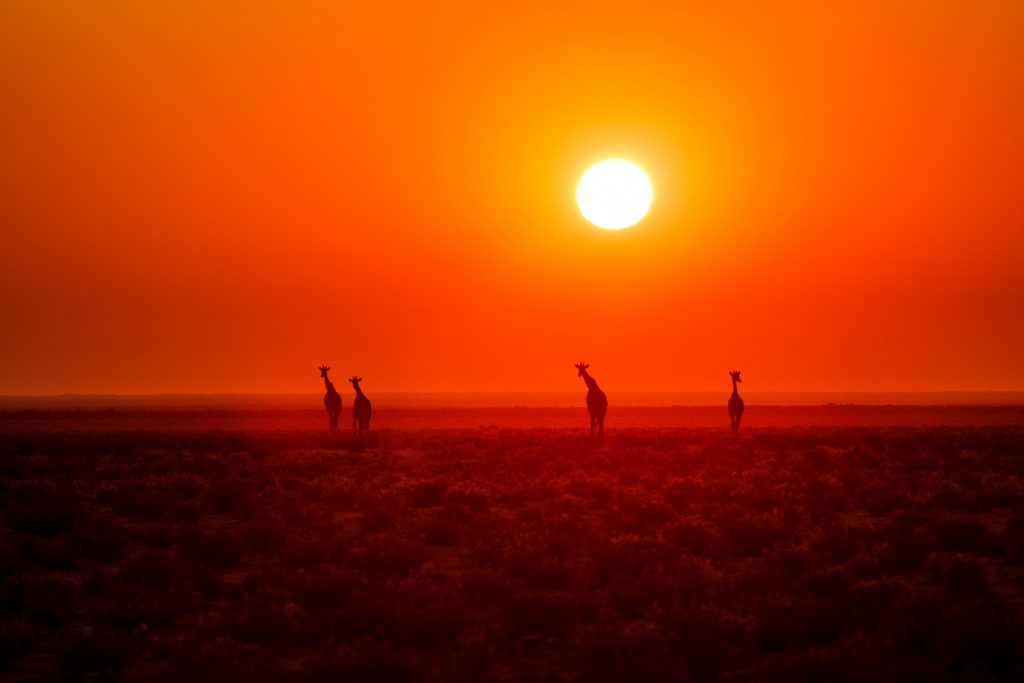
What is definitely worth doing, is checking every day a log book located at the reception of each camp. People write their observations during the day and you can easily find out where the lions were spotted.
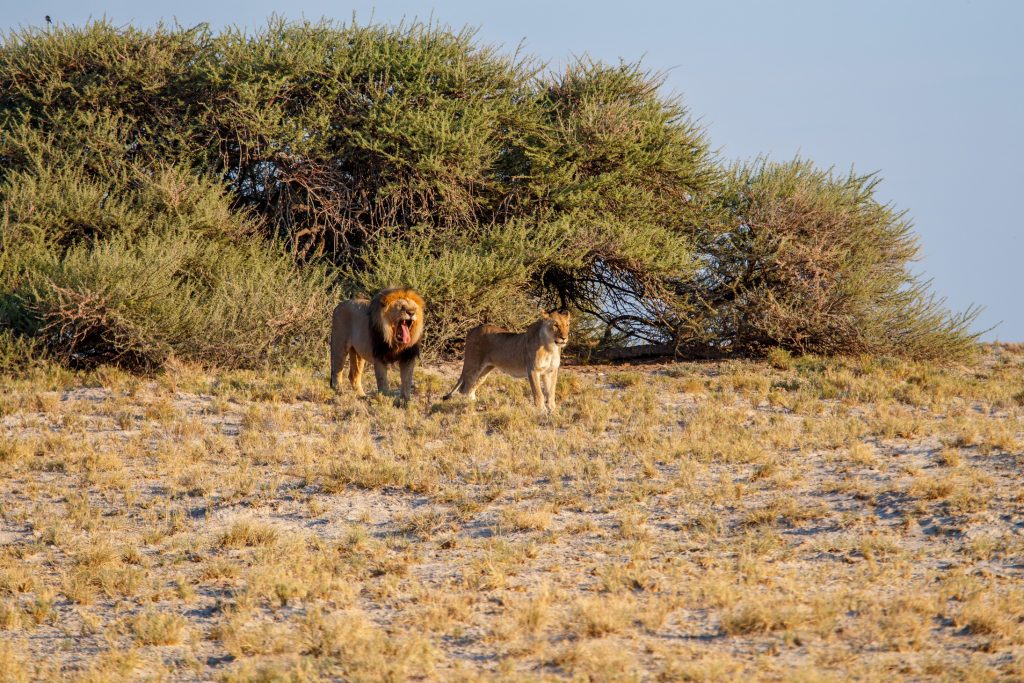
The rhinos can be seen mainly during the night. Therefore, it is an advantage to stay inside the part, because each camp has a water hole. Every evening something interesting happened. The animals just came, drank water, and left.
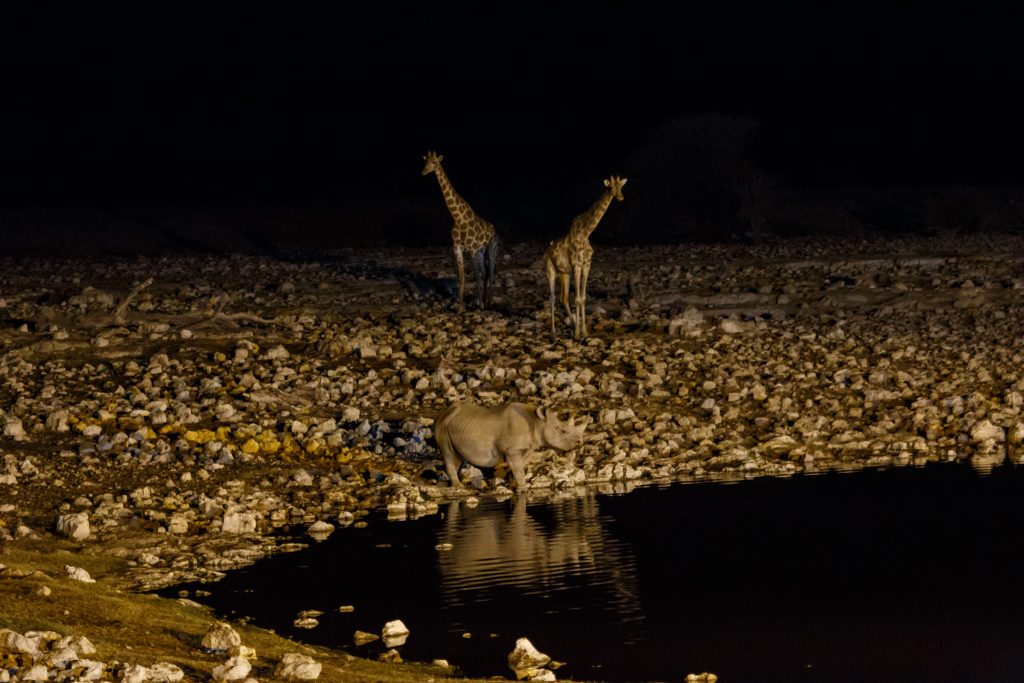
After a few nights in Etosha, we headed southwest to visit Twyfelfotein, which is a rock formation with ancient engravings. This site is part of UNESCO heritage. Approximately 6000 years ago hunters and gatherers engraved the animals, which they observed. Observing a lion or even a group of lions must have been very dangerous at that time. This makes me wonder, how come they observed such dangerous animals and survived to tell the tail.
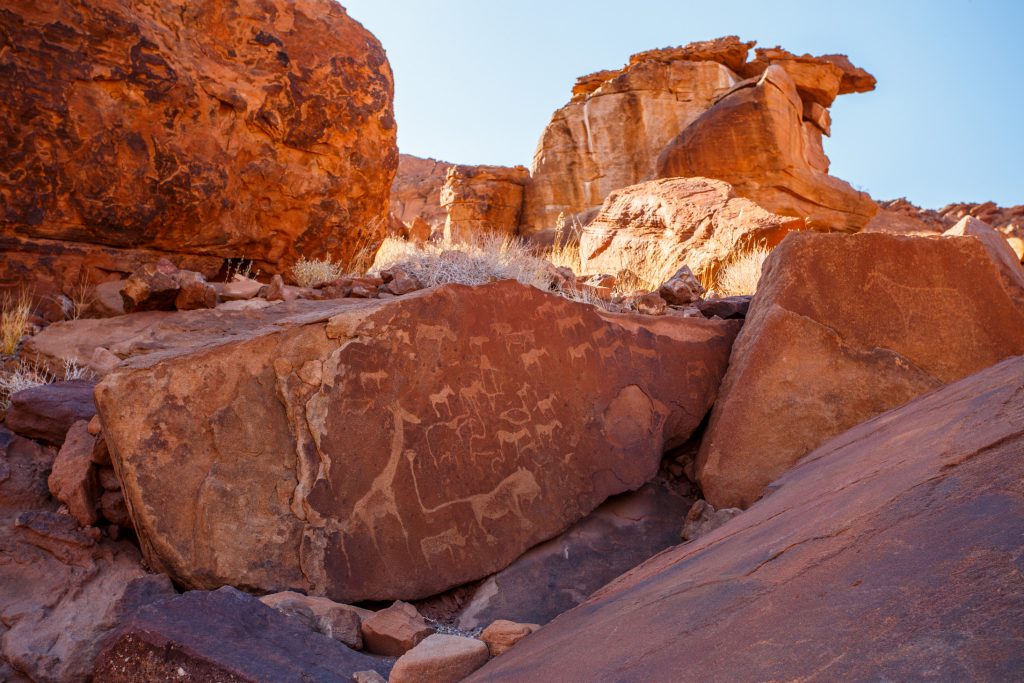
From Twyfelfonein we moved to Swakopmund, a beautiful coastal town. On our way there we did a short hike to see The White Lady painting. When we approached Swakopmund the weather changed rapidly and the temperature dropped from 35 °C to only 12 °C. Luckily we had our winter jackets. Swakopmund is a vibrant town full of bars, restaurants clubs, and many touristic attractions. Probably the most exciting is the dune ride – where the desert meets the ocean. We wondered if we should try it with our rented car, but in the end, we decided to hire a guide, which was a very good decision. I was so happy that I don’t have to drive through the ocean.
Conclusions:
We had a wonderful time in Namibia again. This time we did less astrophotography and more traveling. Obviously, there is a reason to come back. Next time we would like to take a trip to Caprivi Strip, where the hippos can be seen, and from there it is not far from Victoria Falls. Namibia, we will definitely come back!

